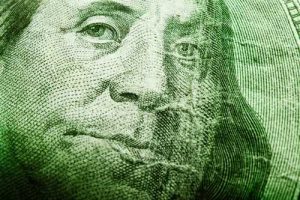3 Things Bitcoin Traders Should Watch in FOMC's First Meeting of 2021

Bitcoin extended its pullback from its weekly high of $32,960 on Wednesday as the market’s focus shifted on the Federal Open Market Committee’s first meeting of 2021.
The flagship cryptocurrency dropped to an intraday low of $30,818, down about 5.5 percent from its opening rate. The appetite for riskier safe-havens weakened against a stronger US dollar and rising US 10-year Treasury note yields, causing declines in Bitcoin and gold markets.
Bitcoin forms a 50-200 death cross on its 4H chart ahead of the FOMC meeting. Source: BTCUSD on TradingView.com
Market participants eye an update from Jerome Powell about the Federal Reserve’s view of the economic outlook, fiscal stimulus, and future tapering. Based on his future guidance, Bitcoin traders can determine their medium- and long-term outlook, given the cryptocurrency’s growing correlation with the US markets since the March crash.
Here are the three things they should watch in the Wednesday meeting.
#1 Economic Recovery
Since Fed officials finished their final meeting of 2020 in December, new data has piled up that shows the US economy in a weaker state than before. They include a rise in unemployment claims and a decline in retail sales, both pointing to a slower-than-expected recovery despite monetary tools available.
Nevertheless, the outlook of a better US economic rebound in the second half of 2021 has improved due to the rollout of COVID-19 vaccines. That could prompt Mr. Powell to follow a wait-and-watch strategy while keeping their existing policy tools intact.
Market participants also expect that the Fed chairman provides clearer indications of the short-term outlook—and whether or not he believes in a faster economic recovery in the second half of the year. Any positive outlook from him would weigh negatively on Bitcoin—and vice versa.
#2 Bitcoin against Taper Tantrum
Investors fear that the Fed may consider scaling back its monetary support for financial markets in 2021 should it expect a robust economic rebound.
The worries come from a small number of regional Federal bank presidents that knocked the bond markets in early January by speculating that the US central bank would wind down its $120 billion per month asset purchase program.
But based on Mr. Powell’s previous comments on the matter, the Fed won’t stop backing their indefinite bond-buying strategy prematurely. Ken Taubes, chief investment officer for the US at Amundi, says the economic environment would improve by this year’s summer and fall seasons.
“The heat in the kitchen is going to get pretty hot for the Fed,” he added while anticipating that Mr. Powell would wind down bond-buying if the rebound sustains.
Withdrawing from purchasing short-term debts would push the yields higher, making it attractive for mainstream investors to re-allocate their riskier investments into the bond market.
Bitcoin and gold do badly when the Treasury yields go up.
#3 New Dovish Members
The Fed’s likelihood of coming out of the January meeting dovish is higher due to a new set of voting members at the FOMC.
Its annual rotation has brought Thomas Barkin from Richmond, Mary Daly from San Francisco, Atlanta Fed President Raphael Bostic, and Charles Evans from Chicago into the committee.
According to Kathy Bostjancic, the chief US financial economist at Oxford Economics, the new members prevailingly dovish. That means the US central bank would less likely deviate from its ultra-accommodative approach.
In turn, that could work in favor of Bitcoin that benefits from lower bond yields and quantitative easing policies.
Source: Read Full Article

